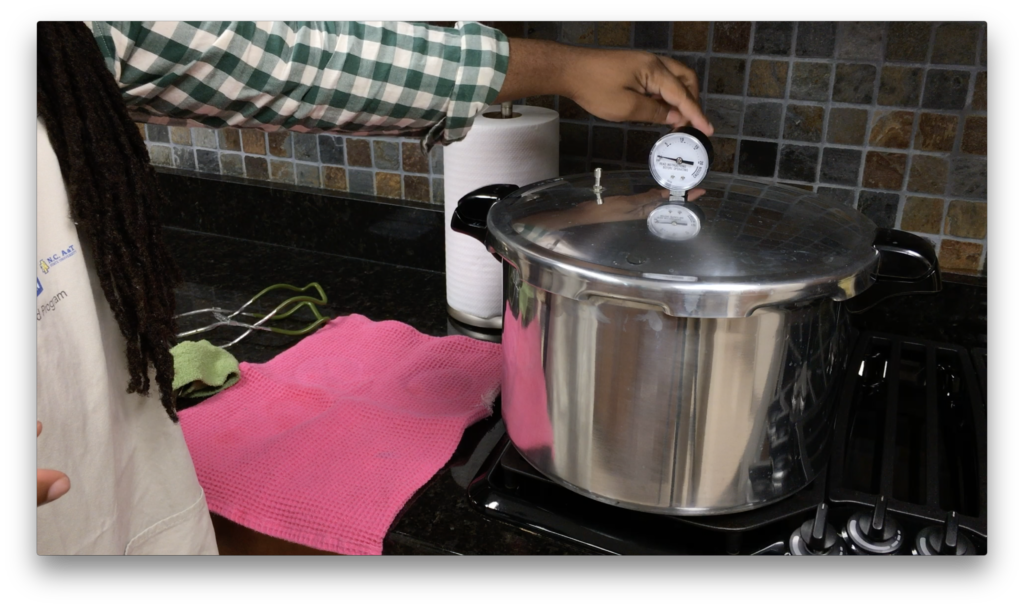FCS@Home: Summer Canning!
go.ncsu.edu/readext?719296
en Español / em Português
El inglés es el idioma de control de esta página. En la medida en que haya algún conflicto entre la traducción al inglés y la traducción, el inglés prevalece.
Al hacer clic en el enlace de traducción se activa un servicio de traducción gratuito para convertir la página al español. Al igual que con cualquier traducción por Internet, la conversión no es sensible al contexto y puede que no traduzca el texto en su significado original. NC State Extension no garantiza la exactitud del texto traducido. Por favor, tenga en cuenta que algunas aplicaciones y/o servicios pueden no funcionar como se espera cuando se traducen.
Português
Inglês é o idioma de controle desta página. Na medida que haja algum conflito entre o texto original em Inglês e a tradução, o Inglês prevalece.
Ao clicar no link de tradução, um serviço gratuito de tradução será ativado para converter a página para o Português. Como em qualquer tradução pela internet, a conversão não é sensivel ao contexto e pode não ocorrer a tradução para o significado orginal. O serviço de Extensão da Carolina do Norte (NC State Extension) não garante a exatidão do texto traduzido. Por favor, observe que algumas funções ou serviços podem não funcionar como esperado após a tradução.
English
English is the controlling language of this page. To the extent there is any conflict between the English text and the translation, English controls.
Clicking on the translation link activates a free translation service to convert the page to Spanish. As with any Internet translation, the conversion is not context-sensitive and may not translate the text to its original meaning. NC State Extension does not guarantee the accuracy of the translated text. Please note that some applications and/or services may not function as expected when translated.
Collapse ▲
Water Bath Canning is using a large pot of water to make a seal on jars for canning. Water Bath canning should be used for foods that are high in acids like fruits or vegetables that are pickled.
As we are gearing towards harvesting our summer produce from our farms and our gardens, we may find ourselves trying to figure out how to save as much of our fresh garden vegetables as we can, as we may not be able to consume it all in a short amount of time.
Preserving our foods is the answer, and one of the best ways to do that is through canning. There are two different methods, water bath canning and pressure canning. Water Bath canning is for higher acid foods like fruits for jamming or acidic pickles, while pressure canning is done for low acids foods like many vegetables and some meats products. Knowing which method to use is important as it prevents food spoilage and food borne illness. Water Bath canning may rely on the acid in foods to make an unpleasant environment for dangerous bacteria to grow, thus killing them. Pressure canning uses pressure to increase temperature of processing, low-acid foods so that they may kill of bacteria that may form spores like Clostridium botulinum. Spores help to protect some bacteria from harsh conditions.

This is a pressure canner used for the pressure canning method. This helps to safely process low-acid foods. Examples of low-acid foods are many vegetables not for pickling and meat products.
If you would like more information on canning or need an examples of canning safely, be sure to check out some of our FCS@Home videos. This week, we have a video on pressure canning green beans. You can also check out amazing resources on canning and other methods of food preservation at The National Center for Home Food Preservation, through the University of Georgia Extension. You can also contact our office for any questions on canning or checking pressure canner gauges on dial pressure canners at (704) 283-3801.




